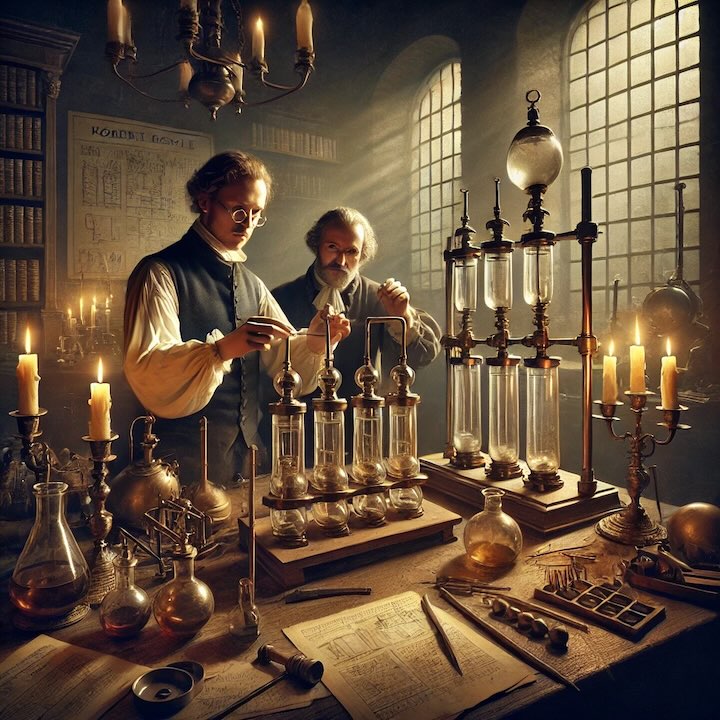
Between 1660 and 1674 Robert Boyle developed a pneumatic pump. He was then able to describe the relationship between pressure and volume. This is today known as Boyles Law .
Between 1660 and 1674, Robert Boyle, a pioneering scientist and one of the key figures of the Scientific Revolution, made groundbreaking contributions to our understanding of gases. One of his most significant achievements during this period was the development of a pneumatic pump, a device that allowed Boyle to experiment with air pressure and volume in ways that had not been possible before. His experiments with the pneumatic pump eventually led him to formulate what we now know as Boyle’s Law, a fundamental principle in the field of gas laws.
The Development of the Pneumatic Pump
Robert Boyle was fascinated by the nature of air and its properties. In the mid-17th century, the concept of a vacuum—a space entirely devoid of matter—was hotly debated among scientists. Many believed that a vacuum could not exist, as it was thought that nature abhorred empty space (a belief known as horror vacui). However, Boyle, along with his assistant Robert Hooke, sought to explore this concept through experimentation. They built a pneumatic pump, a sophisticated device for its time, which allowed them to manipulate and measure air pressure in a controlled environment.
The pneumatic pump was based on earlier designs by German inventor Otto von Guericke, but Boyle and Hooke improved upon these designs to create a more efficient apparatus. Their pump could remove air from a sealed chamber, creating a partial vacuum. This innovation opened the door to a wide range of experiments on the properties of air, pressure, and vacuums.
Boyle’s Experiments and Observations
Using the pneumatic pump, Boyle conducted numerous experiments to better understand the nature of air. He observed that air, which had been seen as weightless or insignificant by some, was indeed a physical substance that exerted pressure. Boyle’s experiments showed that when the volume of a gas is decreased, its pressure increases, and when the volume is increased, its pressure decreases.
Through meticulous experimentation, Boyle was able to describe a mathematical relationship between the pressure and volume of a gas. He found that, for a given amount of gas at a constant temperature, the pressure of the gas is inversely proportional to its volume. This means that if the volume of a gas is halved, its pressure is doubled, and if the volume is doubled, the pressure is halved. Boyle’s work was the first to clearly demonstrate this relationship, and it laid the foundation for modern thermodynamics and the study of gases.
Boyle’s Law
Today, this relationship is known as Boyle’s Law. It can be expressed mathematically as:

Where P is the pressure of the gas, V is the volume of the gas, and k is a constant for a given amount of gas at a fixed temperature. The law essentially states that pressure and volume are inversely related when temperature is held constant.
Boyle’s Law was a monumental discovery for the scientific community, not only because it provided a precise, quantifiable description of how gases behave under different pressures but also because it challenged long-held beliefs about the nature of air and vacuums. Boyle’s rigorous method of experimentation and his willingness to question established ideas exemplified the spirit of the Scientific Revolution.
Legacy of Boyle’s Work
Robert Boyle’s development of the pneumatic pump and his formulation of Boyle’s Law had far-reaching implications. His work on gases would influence future scientists, including Isaac Newton and Jacques Charles, and it laid the groundwork for the development of the kinetic theory of gases. Boyle’s Law remains a fundamental principle in chemistry and physics and is still taught to students today as a cornerstone of gas laws.
Boyle’s contributions during this period also helped to establish the scientific method as we know it. His approach to experimentation, which emphasized careful measurement, observation, and the systematic testing of hypotheses, became a model for future scientists.
 >
>